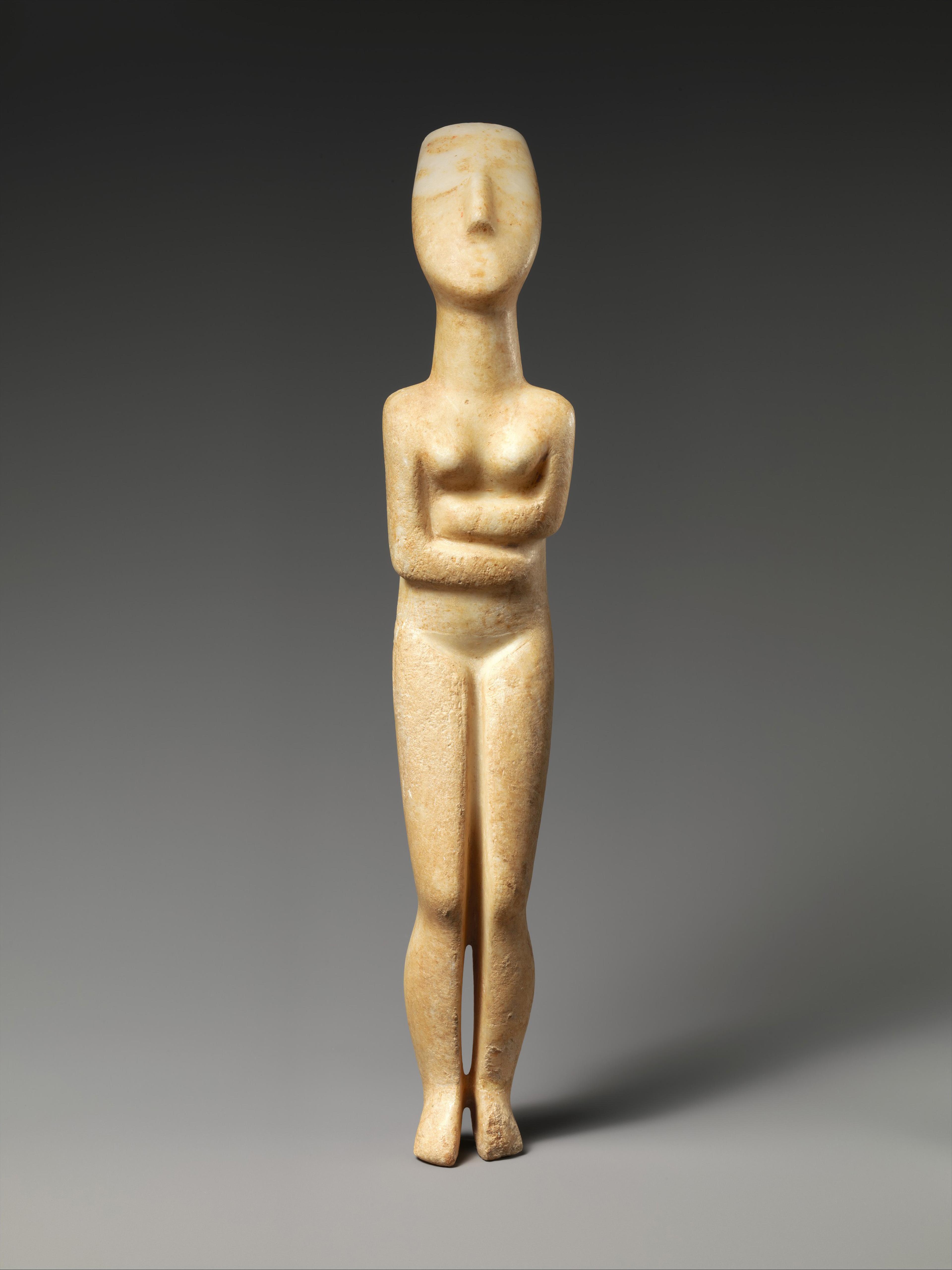
Marble female figure, ca. 2700–2500. Early Cycladic II. Marble, 14 5/8 in. (37.1 cm). The Metropolitan Museum of Art, New York, Fletcher Fund, 1934 (34.11.3)
They have that sense of fluidity of the islands being interconnected. That's the feeling of the poetry of them.
I am Carolee Schneemann and I'm a visual artist working in a great variety of materials.
I've been deeply moved and rather obsessed with the early Cycladic figures. I think what they have to say to us right now is poignant. They provide history because the destruction of more pastoral, goddess-identified cultures traditionally never reverts. These are like the symbolic remains that are deeply physiologically connected to women's sense of their own body. They're not in any way traditionally sexualized, but to the contrary they have, consistently, a defined vulva.
It's important to me to try to enter into these depictions and to take the very position of the folded arms. This position with the arms is extremely reverential, it's contemplative, it's self-contained, and it's very peaceful. And many of these little figurines are concerned with pregnancy and maternity and also with death. They always have breasts and they're rather adorable and simplified.
All of these forms have this elegant simplification: the gracefulness; the composed legs; these long, elongated necks; with these very interesting phallic shapes. Some of them seem to be more protective and pulled in around the body, and you can feel an unease in the position.
My presumption is that these figurations were all carved by women. The aspects of physicality I identify with very deeply. I don't have any sense of a masculine construct. It's only when the Greek, with their masculine gods, begin to invade the Cycladic islands that the arms open up. The subtlety—and the sense of safety—is completely transformed.
Sculpture has that tactility and dimensionality where we can imagine putting our hands around it or on it. They have that sense of fluidity of the islands being interconnected. That's the feeling of the poetry of them.